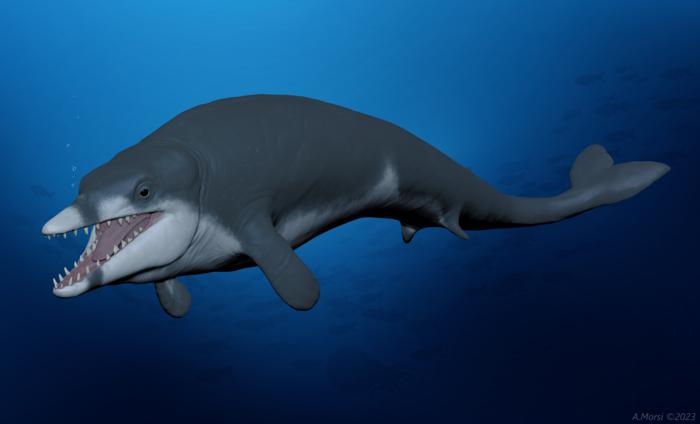How an Ancient Fossil Found in Egypt May Explain Whale Evolution
Posted on Categories Discover Magazine

Long before the Ancient Egyptians walked the Earth and the great pyramids were constructed, something else inhabited what is now Egypt. Some 41 million years ago, Egypt’s desert was covered by an ancient sea and was once home to the now-extinct whale species, Tutcetus rayanensis.
According to a recent study published in Communications Biology, the newly discovered T. rayanensis is the smallest basilosaurid whale species known to date, and one of the oldest specimens of the whale family found in Africa.
“The Eocene fossil sites of Egypt’s Western Desert have long been the world’s most important for understanding the early evolution of whales and their transition to a fully aquatic existence,” said Erik Seiffert, co-author of the study, in a press release.
(Credit: Hesham Sallam – Mansoura University Vertebrate Paleontology Center)
The Egyptian paleontologists Abdullah Gohar, Mohamed Sameh, and Hesham Sallam (from left) next to the holotype fossils of the newly identified basilosaurid whale, Tutcetus rayanensis, at Mansoura University Vertebrate Paleontology Center.
Evolution from Land to Water
Researchers believe that basilosaurid whales originally descended from land-based animals before adapting to life in the sea. And T. rayanensis is an example of the first phase of this transition into a fully aquatic life.
“Whales’ evolution from land-dwelling animals to beautiful marine creatures embodies the marvelous adventurous journey of life,” said Hesham Sallam, study leader, in a press release.
A Famous Egyptian Ruler
The international research team, led by Egyptian scientists, uncovered the fossil embedded between Eocene rocks. The T. rayanensis fossil contained the creature’s skull, jaw and neck vertebra.
Using a CT scan, researchers could analyze teeth and bones from T. rayanensis and reconstruct its growth patterns. From the specimen data, they concluded that T. rayanensis was likely 2.5 meters (about 8 feet) long and weighed about 187 kilograms (about 412 pounds).
“The relatively small size of Tutcetus (188 kg) is either primitive retention or could be linked to the global warming event known as the ‘Late Lutetian Thermal Maximum (LLTM),'” said Sanaa El-Sayed, co-author of the study, in a press release.
(Credit:Hesham Sallam – Mansoura University Vertebrate Paleontology Center)
Life reconstruction of two individuals of the extinct basilosaurid whale Tutcetus rayanensis, with the foreground individual preying on a nautilid cephalopod and another swimming in the background. Illustration by Ahmed Morsi.
According to the study, the basilosaurid whale species typically had a strong tail, flippers and small hind limbs, similar to back legs. These limbs may have been used for mating.
The researchers ultimately named this discovery after one of Egypt’s famous rulers. Tut derives from Tutankhamun (King Tut), while Cetus derives from the Greek word for whale. And Rayanensis refers to Fayum’s Wadi El-Rayan Protected Area, where researchers found the fossil.
Read More: Is an Ancient Whale That Resembles a Massive Manatee the Heaviest Animal Ever?